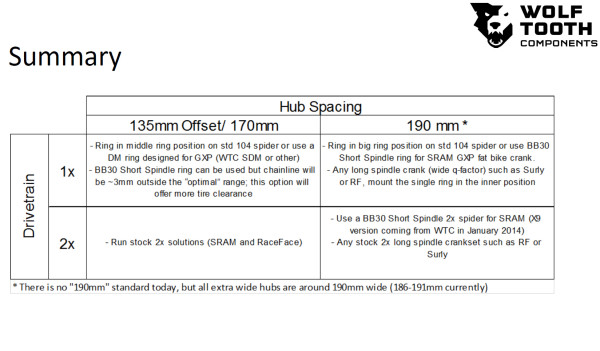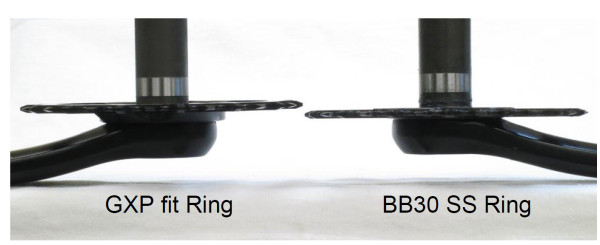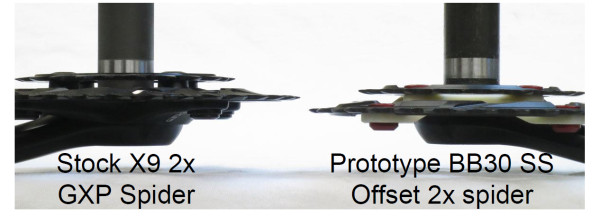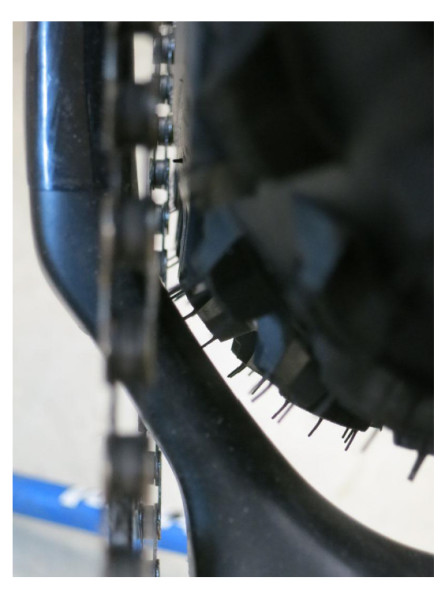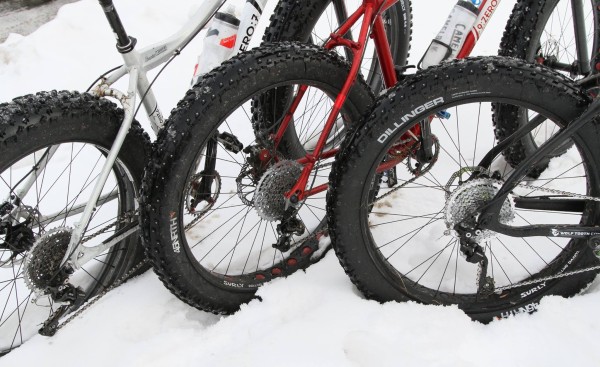
Back in the day, fatbike drivetrains were easy. They used offset wheels with 135mm spacing and used a crank with a 100mm bottom bracket. All of a sudden 170mm centered frames came along, and before you could say fat, 190mm bikes surfaced. Fatbike drivetrain standards quickly went the way of the rest of the bike industry with enough options to leave your head spinning. While it’s a challenge keeping it all straight for your avearage consumer, it’s also a challenge for manufacturers such as Wolf Tooth Components. In order to sell fatbike products they have to know which part works on what, so the WTC crew up in Minnesota has been busy putting together a sort of “whitepaper” outlining the details of fatbike drivetrains – specifically chain lines.
If you’ve been wondering what parts you need to order for your next fatbike build, the info after the break will certainly come in handy.
Fatbike chainline optimization
- This is not meant to be a sales pitch. We love fat biking and we own and ride all the fatbike rear hub spacings out there today so we are just sharing what we have found.
- For consideration when you read, front ring spacing between rings is 7-8mm and the rear cogs are about 4mm apart on 10/11 spd MTB cassettes.
- In our experience and testing +/- 3mm of a perfect chainline provides for the best functioning drivetrain
History Refresher: Different Fatbike Rear Hub Spacing “Standards”
- 135 mm offset – the original solution used on Surly Bikes (and still being used today
• Standard 135 hub but adding 27mm of spindle length (100mm BB – 73mm BB)
• Optimal chainline 64mm (50mm, the standard MTB 1x optimal + ½ of 27mm) - 170 mm – a wider hub that was the first to offer a symmetric rear end to the fatbike world
• Freewheel has the same 17.5 mm shift as is used on the 135 mm offset
• Optimal chainline 64mm (50mm, the standard MTB 1x optimal + ½ of 27mm) - 190 mm – a wider symmetric hub used on bikes that have frame clearance for 4.8” tires (e.g. Bud, Lou, and Big Fat Larry)
• Freewheel is now shifted out further yet by ~10mm
• Optimal chainline is 70-72mm (a little off from the mathematical optimal, but is what we found with testing)
Standard 100mm Spindle Cranksets
- Standard 100mm Spindle cranks are optimized for 170mm and 135-offset rear hubs
- Standard 100mm Spindle cranks are NOT optimized for 190mm and 135-offset rear hubs
• Most 100mm cranksets do clear the frames of most 190mm rear hub frames. This is good news as converting to 190 does NOT necessarily mean you need a new crankset!
• The only stock solutions optimized for 190mm rear hub are the RaceFace long spindle crankset and the MWOD from Surly
• Both solutions result in ~20mm wider q-factors
Running a standard 100mm Spindle Crankset on a 190 Rear Hub
- Why is this important?
• 190 mm rear hub fat bikes are becoming more common and may become the de-facto standard
• The q-factor on fat bikes is already wide and making it wider is not an ideal solution for most riders knees and hips! - As noted, the ideal chainline on a 190mm rear hub is 170-172mm or about 6-8mm further outboard than on a standard 100mm crankset. The following solutions get the drivetrain within +/-3mm of the “perfect chainline”
• 1x drivetrains:
• For SRAM, use a BB30 short spindle single ring (chainline ~170)
• On a triple crankset, mount the single ring in the BIG ring position (chainline ~172)
• 2x drivetrains:
• For SRAM – Replace the stock spindle with a BB30 short spindle 2x spider (coming from WTC in January 2014)
• For other 2x systems – there is no solution for standard 100 mm spindle cranksets
Chainline Difference for SDM
- Here are X9 cranks lined up with an SDM (SRAM Direct Mount) for GXP on the left and a SDM for Short Spindle BB30 on the right
- Note that the BB30 SS pushes the chainline out 6mm, which makes a good chainline when using an X9 or XX1 crankset on a 190 rear hub bike
Chainline Difference for 2x Spiders
- Here are X9 cranks lined up with a stock GXP 2x spider on the left and a Short Spindle BB30 2x spider (coming from WTC in February) on the right
- Note that the BB30 SS pushes the chainline out 6mm, which makes a good chainline when using an X9 crankset on a 190 rear hub bike (you can actually use the small ring!)
 4.8” Tire on a 170mm Hub
4.8” Tire on a 170mm Hub
Common question – “Can I run a 4.8” tire on my 170 rear hub bike?” -> Answer is “Maybe”
- Our Setup Pictured – carbon Beargrease with Surly Lou tire (4.8”) on a 80mm rim and a BB30 SS (Short Spindle) DM (Direct Mount) ring
- Using BB30 SS DM ring is the only way to make the chain have appropriate 4.8” tire clearance with a 1x DM setup (chain was almost touching with a GXP ring)
• The chainline is outside the optimal range by ~3-4mm
• Mounting a 104 BCD ring the big ring position will have a similar tire clearance and chainline - Tire clearance to the frame is VERY tight on this frame
• Note that this frame was not designed for this size tire
• Clearance will vary from 170 frame to 170 frame by model
Other Links to Fat Bike Chainline and Tire Clearance References.
- Some other very useful references:
• Salsa and tire clearance
• RF Fat Bike Crankset clearance
Thanks to Wolf Tooth Components for putting this together!

